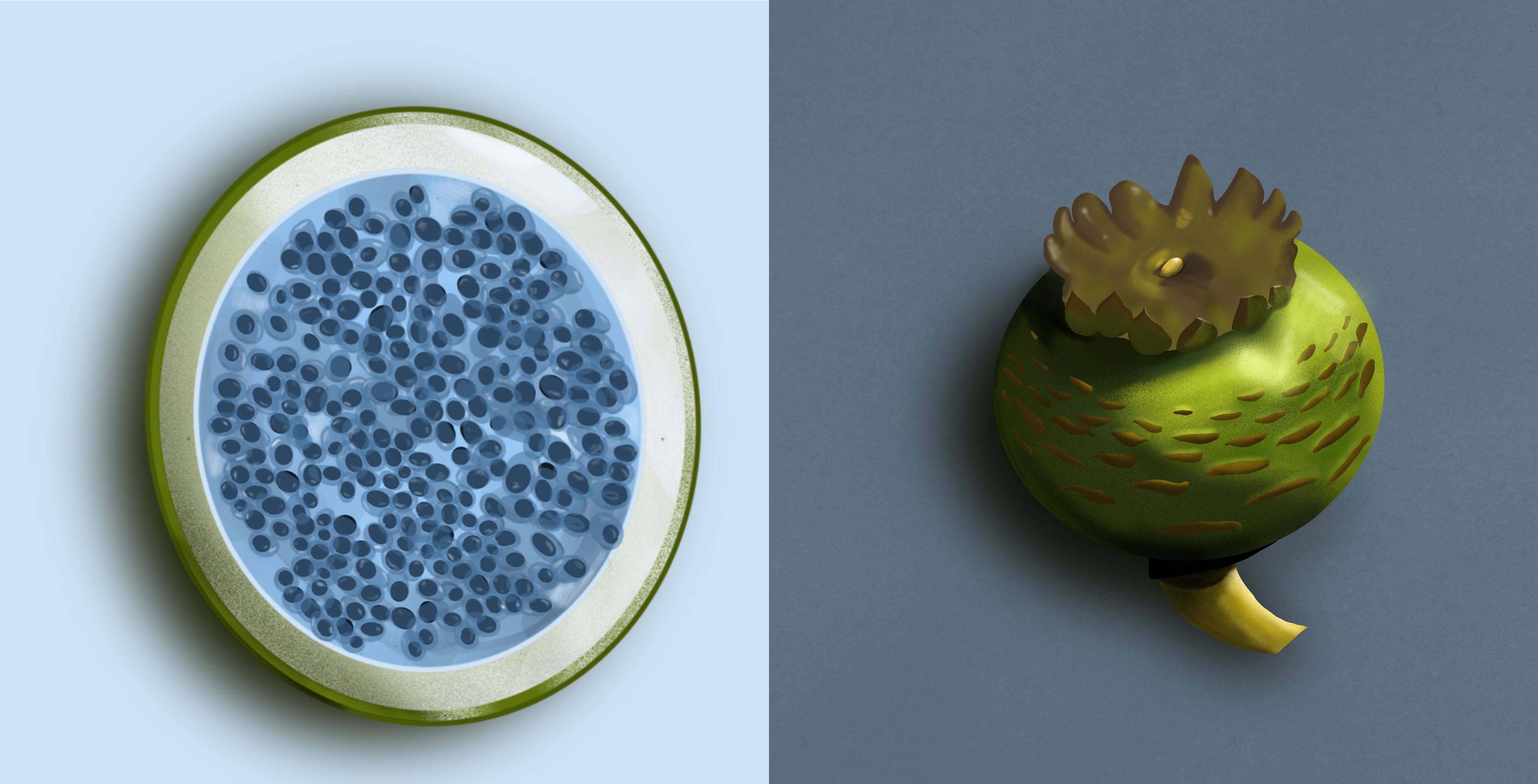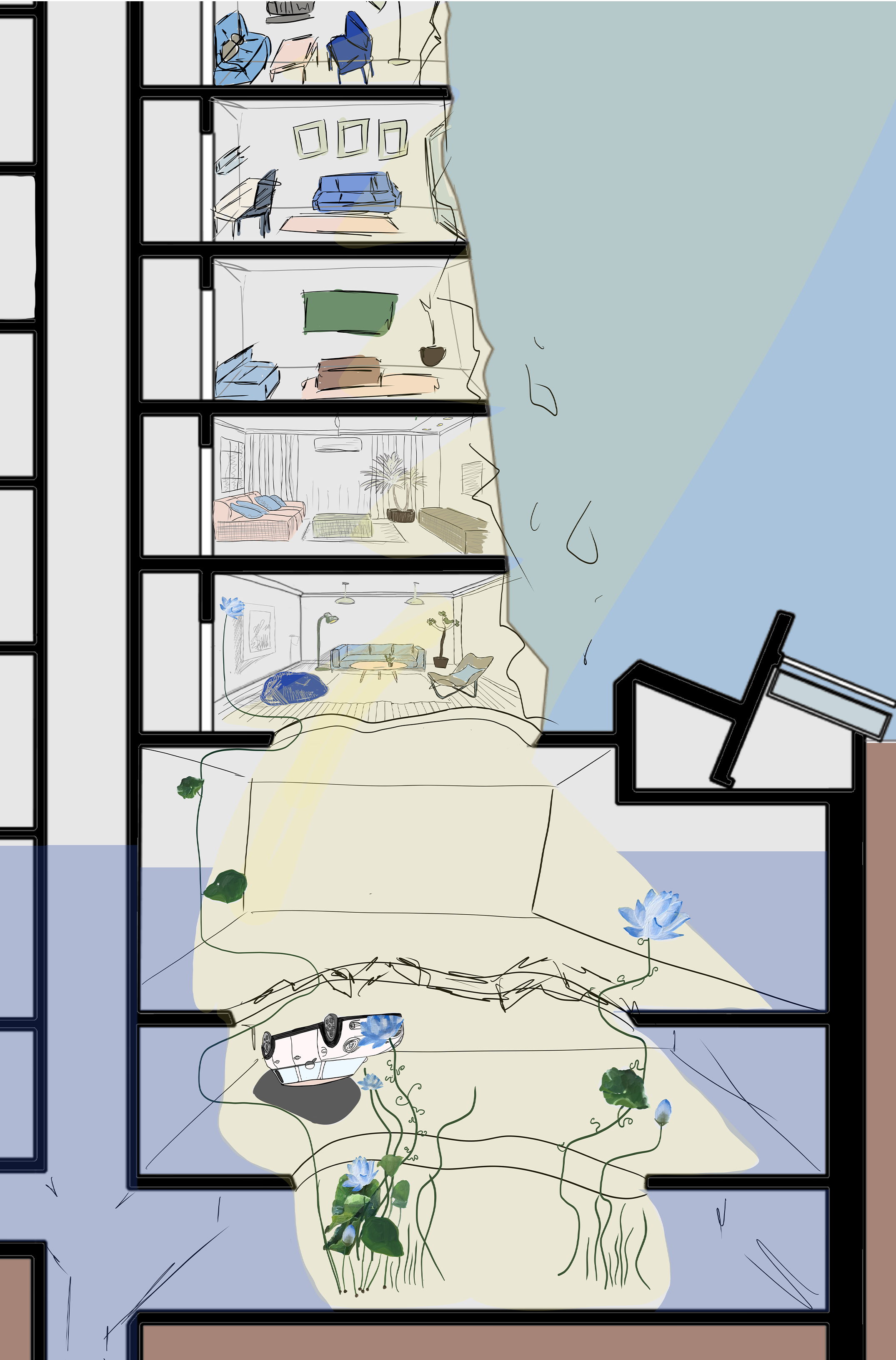The blue water lily, a symbol of
resilience and adaptiveness, is swept away in the Yarkon floods to what
remains of Ramat Gan’s Haruzim neighborhood. It lives in the ruins of
abandoned structures and thrives in their flooded lower levels. The lily
grows high and deep, transforming the landscape. The project explores the
concept of transience and the cyclical nature of existence, emphasizing the
inherent beauty found in the rebirth that comes after ruin. The water lily
grapples with the challenges of its new habitat and manages to adapt and
thrive. It redesigns its leaves, roots and reproductive strategies to survive
in the new world, teaching us about hope, rebirth and life’s perseverance in
the face of crushing adversity.
|




